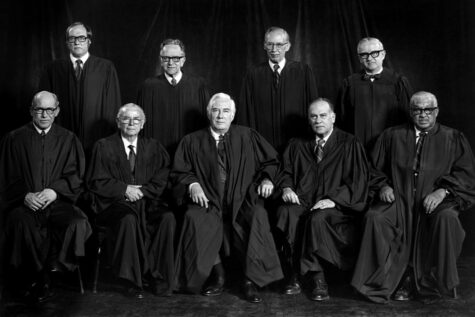Political Advertisements Influence 2016 Presidential Voters
October 26, 2016
Campaign advertisements have been a constant component of American politics since the beginning of the United States, and this year is no exception.

The 2016 presidential race has been one of the most heated and intense elections in United States history. Republican nominee Donald Trump and Democratic nominee Hillary Clinton have run a combined 133 advertisements. Ads can be divided into two categories: attack ads and promotional ads. Attack ads, like the name suggests, aim to negatively impact an opponent’s campaign, while promotional ads attempt to put a candidate in a positive light. Political advertisements, whether they are used to inform or to harm, are playing a big role during this election season, and understanding them is key to being an informed voter.
As of October 18th, 2016, The New Republic has collected 31 Donald Trump advertisements that have been run during his presidential bid. Twenty of them, or 65%, have been attack ads. Clinton, on the other hand, has run 101 ads, of which 68% have been positive advertisements. Furthermore, the vast majority of her 32 attack ads have been aired in the past four months as she prepares for the final election of the year.
The 21st century has introduced many new ways for candidates to advertise themselves, especially over the Internet. Hillary Clinton’s YouTube channel has over 25 million total views as of September 5th, 2016. Her most viewed video, an attack ad against Donald Trump, has been viewed over five million times since its release in September 2016. Those five million viewers are potential voters, who could be swayed by seeing an ad like this. According to data gathered by Google, YouTube is the world’s most used video sharing service, and its importance to this election is nearly immeasurable.
Donald Trump has also run plenty of ads over YouTube, but his most popular and arguably most important sources of advertisement are his social media accounts. His 12.1 million Twitter followers are second among politicians to only Barack Obama. His Twitter, along with his over 11 million Facebook likes and 2.6 million Instagram followers, make him one of the most popular people on the planet.
Zac Moffat, Mitt Romney’s digital campaign manager in 2012, agrees. “He’s used social media to replace the traditional apparatus of a political campaign,” Moffat said.
By transcending television and newspapers to deliver the majority of his advertisements and messages, Trump has become the political machine. This platform delivers advertisements to the masses faster than any in history, and its adoption shows a distinct transition from traditional news sources such as television and newspapers.
Political ads can, and have, backfired. The Attack Ad Hall of Fame notes that Jimmy Carter’s campaign against Ronald Reagan, in which Carter attempted to display Reagan as unprepared for presidency, completely failed when Carter was the one who came to a debate unprepared. It is unclear if any ads have backfired to the same scale during the election this year, but they have come close. For example, a spot aired by the Clinton campaign criticizing Trump’s endorsement by the Ku Klux Klan received kickback when photos surfaced of Clinton being kissed by former Klansman and West Virginia senator Robert Byrd on the cheek. It is still unclear whether this hypocrisy has significantly harmed her campaign.
Political advertisements are needed in order to inform voters of their options for the presidency. By using political advertising to display both the positives and the negatives of candidates, the public can accurately choose the better candidate.
In an election where the candidates are as different as ever, choosing the right leader is extremely important.



